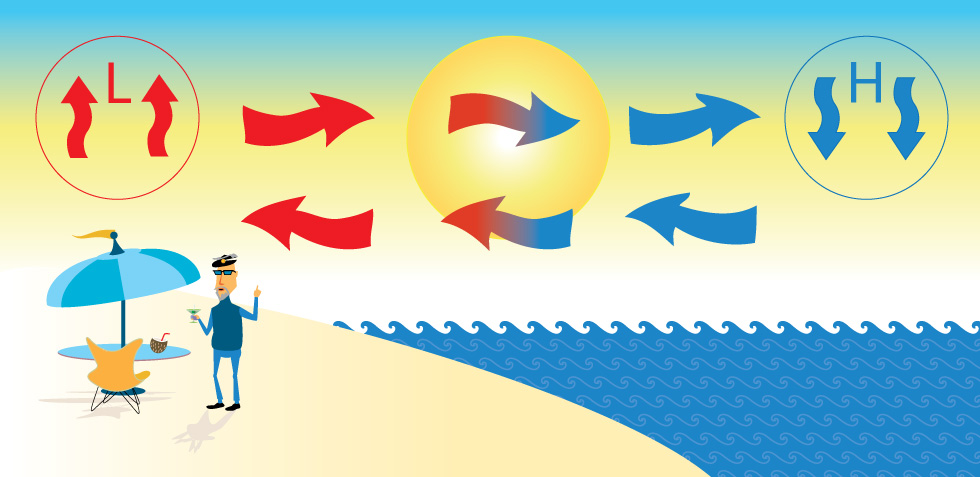Sea Breeze
❝Winds on Earth are a natural daily occurrence. These winds are associated with global weather patterns and interactions between air masses of differing temperatures and humidity.
Global winds come from any direction and travel at various speeds and affect large areas of Earth at the same time—any area, at any time.
The winds that only impact small areas of Earth's surface are named local winds. Local winds are dependent on the local weather patterns and conditions.
The wind seems to constantly blow on the Outer Banks of North Carolina, and it frequently changes directions.
Book an Outer Banks Kid's Soundside Adventure!
Children of all ages will have a blast fishing and exploring the calm waters of the sounds behind the Outer Banks barrier islands with fishing guide and longtime educator, Captain Lenny.
OBX fishing for kids »

The scientific explanation for this begins with the relationship between sunlight and air pressure. The process starts when the sun rises each morning. It takes eight minutes of light-speed travel for the sun's radiation to arrive at Earth's surface. Solid objects such as rocks, sand, roads, and buildings absorb this radiation faster and get hotter than liquids such as our lakes, ponds, and oceans.
Near the ocean, the beach sands and roads heat up much quicker and get much hotter than the ocean water. This uneven heating of Earth sets up areas of different air pressure zones—the hotter areas being low pressure and the cooler areas being high pressure.
Whenever this occurs, the lighter, less dense air from warmer low pressure zones will rise and be replaced with the heavier, denser, and colder air of the high pressure zones. This horizontal movement of air from high to low is wind.

Areas that border oceans or other large bodies of water experience this on an almost daily schedule. The land heats up first in the morning, creating a low pressure zone. The ocean heats up much slower and becomes relatively cooler than the beach making it a high pressure zone. The air moves from the water to the land each morning forming a sea breeze. These pressure zones might equal out later in the day and the winds may diminish. However, as the sun sets, the scenario reverses and the pressures zones do a flip-flop. The wind direction changes from beach to ocean and a land breeze forms.
This combination of local and global winds cause the almost perpetual breezes that blow on the Outer Banks.
One last consideration is how winds are named. Winds are always named for the direction that they arrive from. A north wind comes from the north but blows in a southerly direction. A sea breeze blows from the ocean towards the beach.❞
